Our today’s guest is Gainward‘s Goes Like Hell model, a factory overclocked version of GTS 450. The reference card, as you may recall, runs at 783MHz for the GPU and 902MHz (3608MHz effectively) for the memory. Gainward GTS 450 GLH 1GB, on the other hand, comes with a 930MHz GPU and 1000MHz memory (4000MHz effectively). With such high operating clocks, Gainward GTS 450 GLH is already among the two fastest GTS 450 cards around.
Gainward launched its GTS 450 GLH more than a month ago, together with GTS 450 GS 1GB and GTS 450 1GB cards. The Golden Sample card runs at 880MHz /975MHz (3900MHz effectively) whereas Gainward GTS 450 runs at reference clocks.
Nvidia aimed Geforce GTS 450 cards at gamers with limited budgets, but the card’s initial pricing was a bit too high (around €129). Luckily for customers, the pricing is much more realistic and you can buy a GTS 450 for about €100. Currently the lowest priced GTS 450 comes exactly from Gainward and is priced at about €100, here. GTS 450 GLH, on the other hand, will set you back about €117, here.
We must admit that the GTS 450 would’ve had a much easier job if it had launched a few months ago, because many users are waiting to see what AMD’s upcoming 6xxx series brings. Furthermore, with the card’s price hanging around €100, they stand little chance of outdoing AMD’s offer. In fact the GTS 450’s main competitor is Radeon HD 5770, which is one year old. The GTS 450 arrived to replace the 9800 GTX+ (a.k.a. GTS 250).
GTS 450 is based on Fermi architecture, meaning it packs DirectX 11 support. We’re talking about GF106, the third GPU to be derived from Fermi (GTX 480/470/460 use GF100; GTX 460 uses GF104 whereas GT430 uses GF108).
GTS 450 packs some pretty promising performance for gamers who use resolutions from 1280x1024 to 1680x1050. Of course, we can’t forget 3D Vision, SLI and True-HD audio bitstreaming support.
The card has 192 shader processors, 16 ROPs, 32 texture units, two 64-bit memory controllers (128 bit interface) and 1GB of GDDR5. As far as consumption goes, the reference card will draw up to 106W.
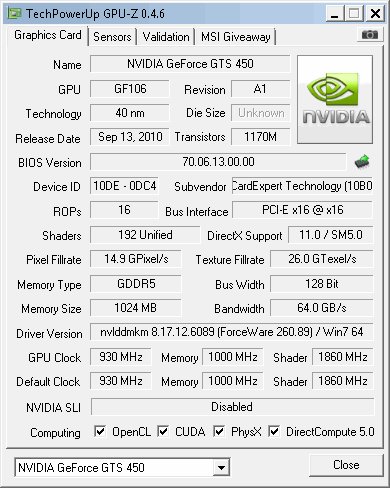
Gainward’s GOOD design is notable for “QuattroPorts” – a wide assortment of vide outs and in-house cooling. So, the GTS 450 GLH comes with HDMI, two dual-link DVIs and VGA outs. Note that most reference cards come with two dual-link DVIs and mini-HDMI.
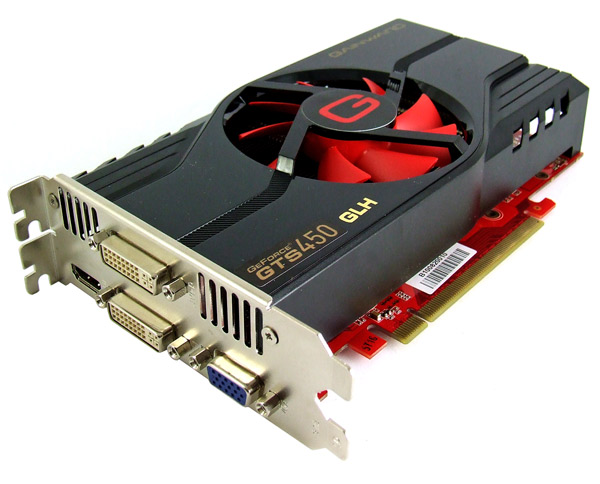
Gainward’s GTS 450 GLH uses nonreference dual-slot cooling that does a nice job and stays quiet throughout our tests.
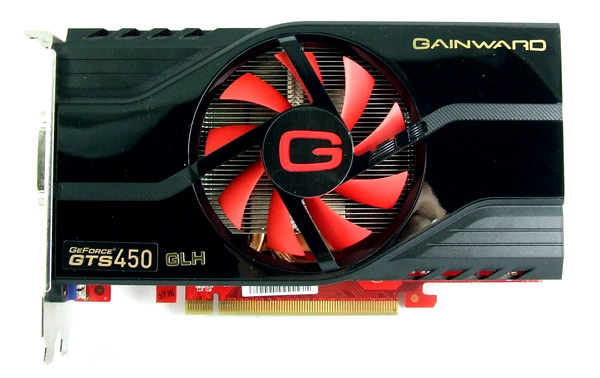
You can see what hides under the hood on the following pictures.
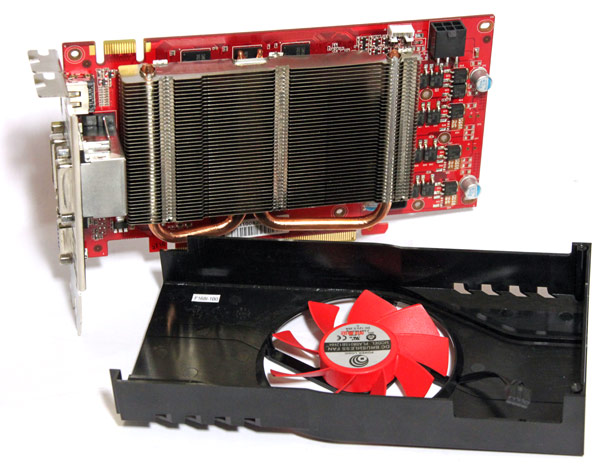
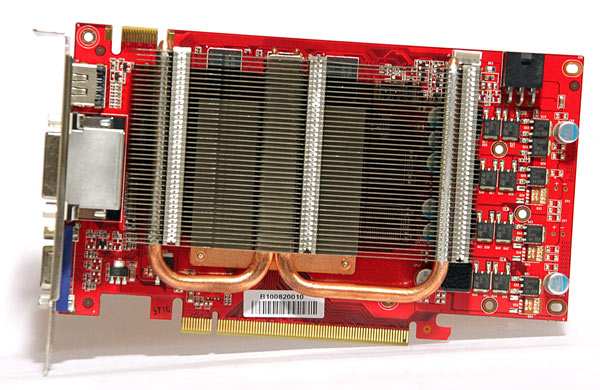
GTS 450 GLH comes with 1GB of GDDR5 memory running at 1000MHz (4000MHz effectively). We’re talking about Samsung’s K4G10325FE-HC05 GDDR5.
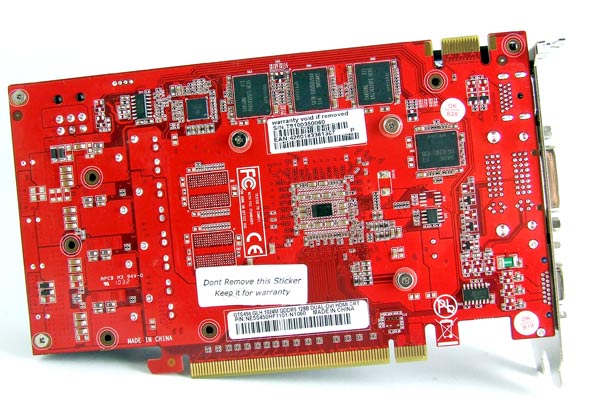
Gainward decided on “QuattroPorts” design, meaning the card comes with four video outs – two dual link DVIs, one VGA and one HDMI out.

The SLI connector means you can chain up to two cards in two-way SLI. The card is powered via one 6-pin power connector.
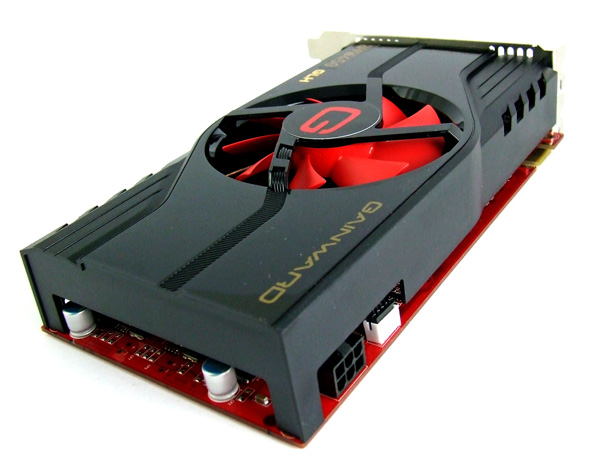
In the box you’ll get the user’s manual, driver CD and one 2x molex-to-6-pin PCIe adapter.
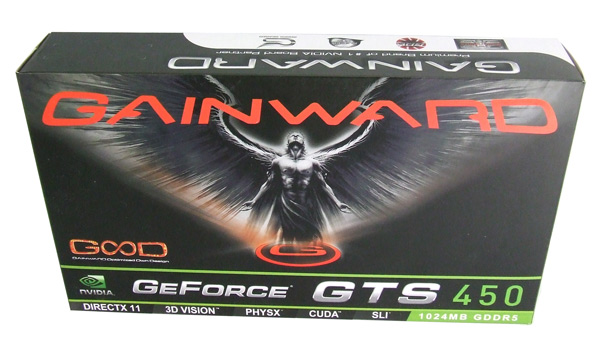
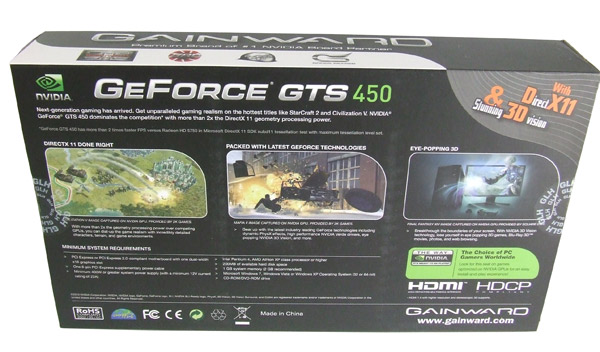
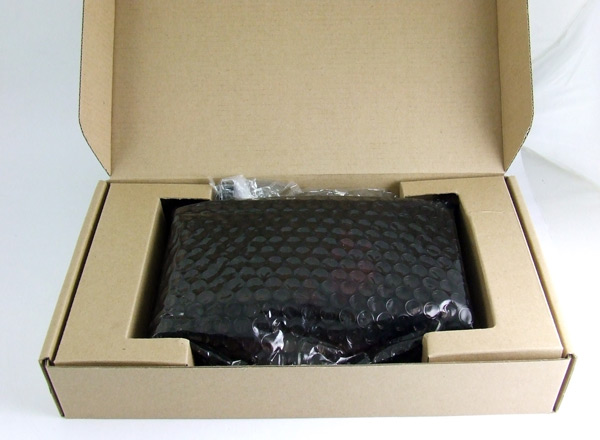
Testbed:
Motherboard: EVGA 4xSLI
CPU: Core i7 965 XE (Intel EIST and Vdrop enabled)
Memory: 6GB Corsair Dominator 12800 7-7-7-24
Harddisk: OCZ Vertex 2 100 GB
Power Supply: CoolerMaster Silent Pro Gold 800W
Case: CoolerMaster HAF X
Fan Controler: Kaze Master Pro 5.25"
Operating System: Win7 64-bit
260.89_desktop_win7_winvista_64bit_english
10.9 CCC
3DMark Vantage
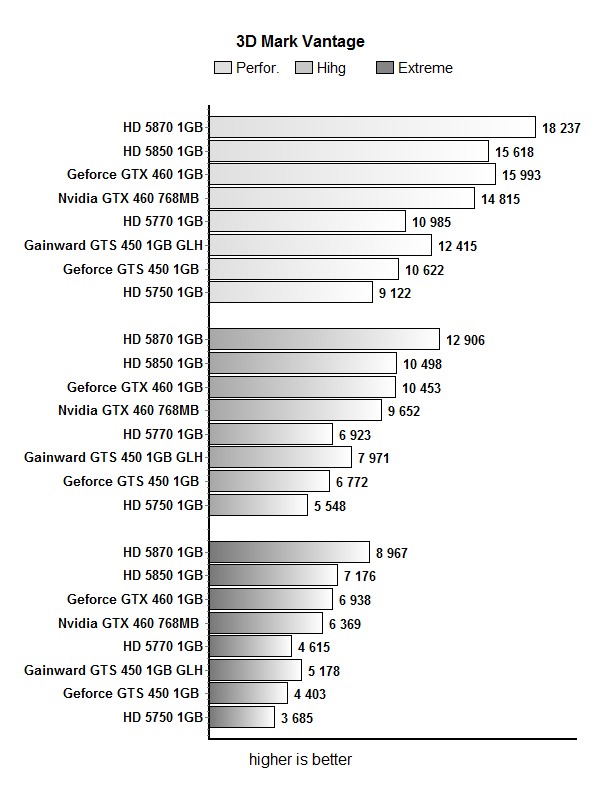
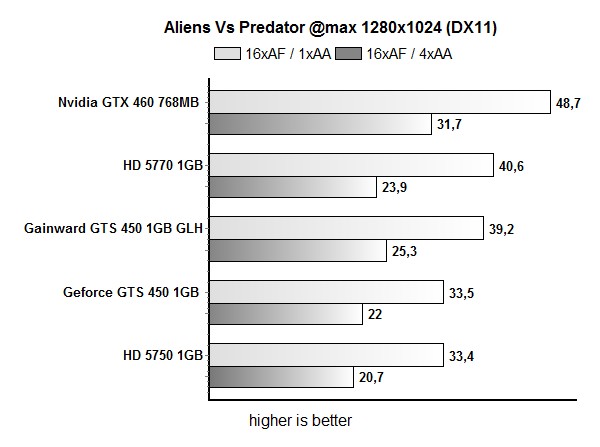
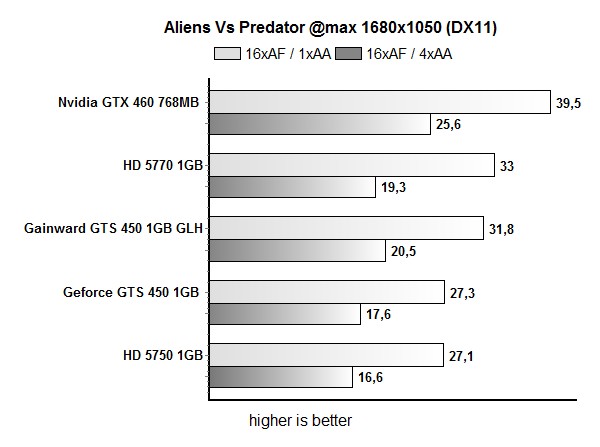
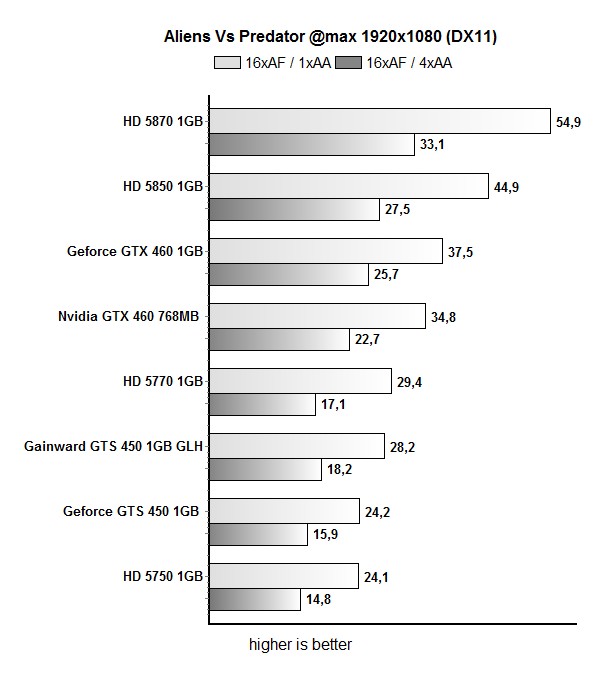
Dirt 2
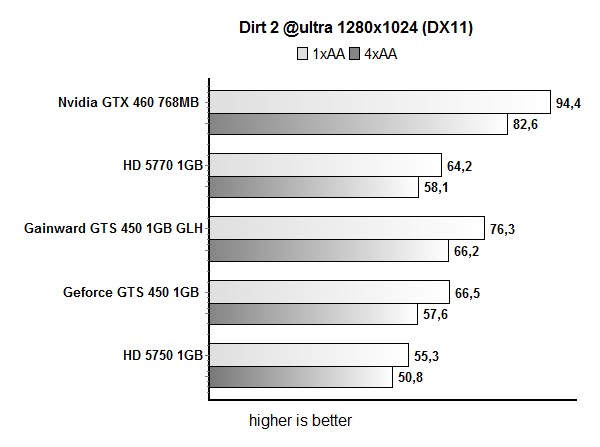
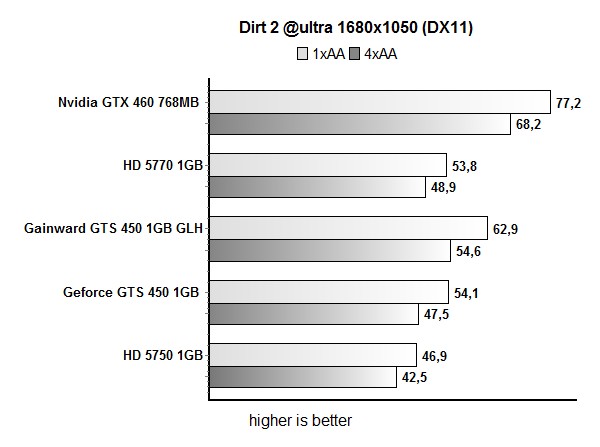
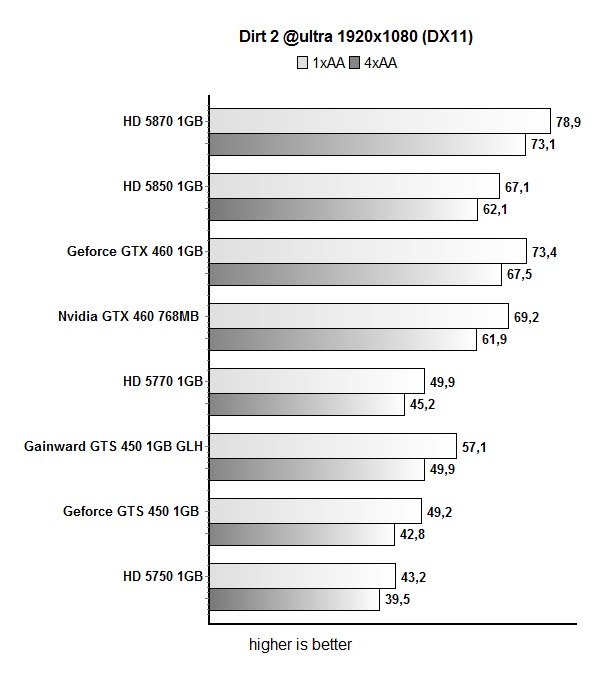
Metro 2033
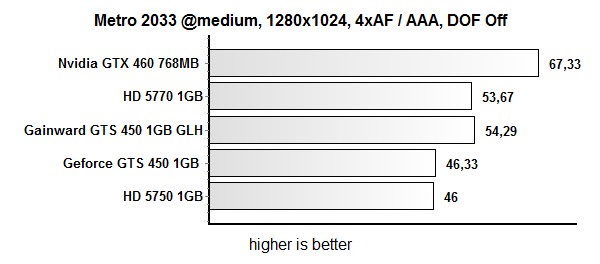
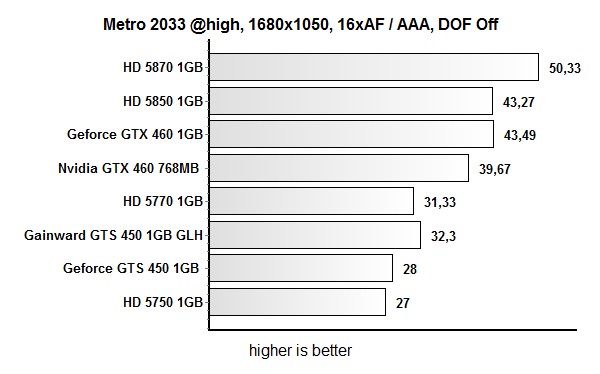
Tessellation Test: Unigine Heaven
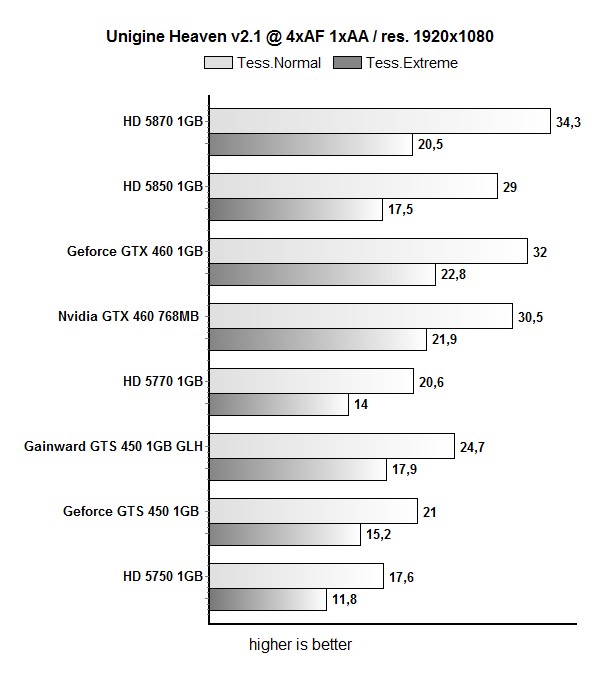
Tessellation Test: TessMark
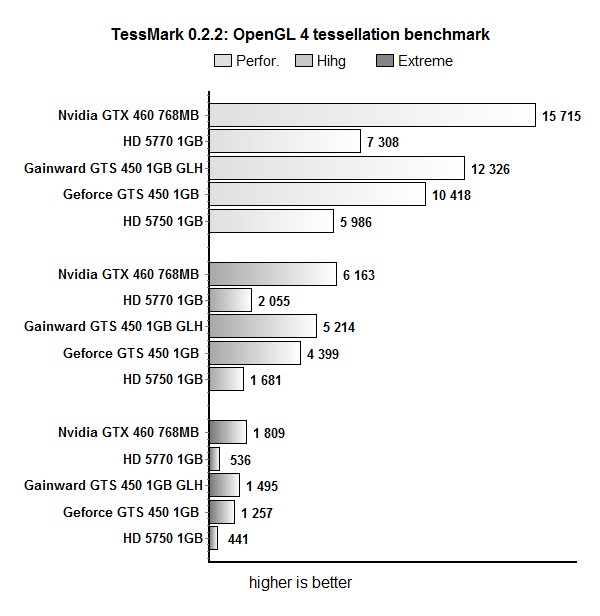
Overclocking
Most GTS 450 cards can be overclocked higher than 900MHz, and we’ve seen that some partners like Gainward dared to push it beyond 920MHz and back it up with a warranty. More precisely, the GTS 450 GLH runs at 930MHz for the GPU with the memory running at 1000MHz (4000MHz effectively).
Our GLH is already overclocked, so we didn’t manage much more. It took a voltage boost to 1162mV to get stable 950MHz for the GPU with the memory running at 1040MHz (4160MHz effectively). We left the fan in AUTO mode and it wasn’t very loud. It’s well worth noting that nothing we did to the fan managed to help with further overclocking.
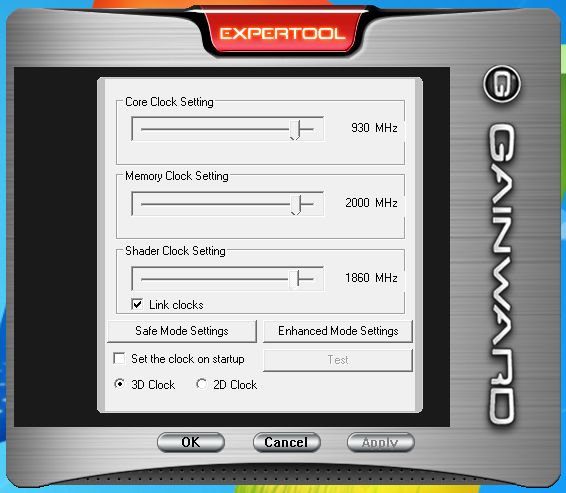
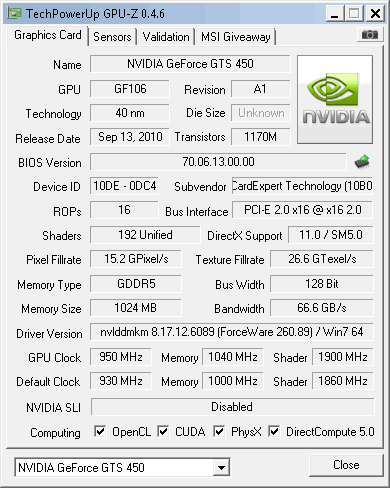
Thermals
GTS 450 GLH didn’t go over 74°C during our tests. The cooler was almost inaudible in idle operation and while it gets louder in FurMark tests, it isn’t too loud. Of course, fan speed can be controlled via ExperTool.
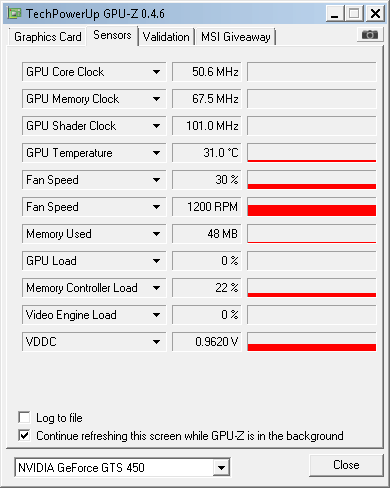
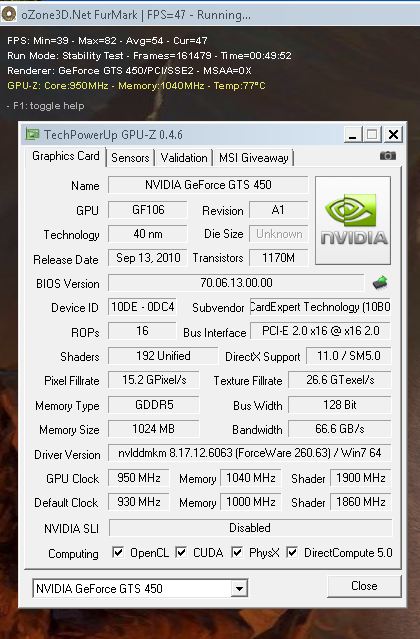
Consumption
We measured our entire rig's consumption after stressing the graphics with FurMark. Consumption shows that the GTS 450 can easily compete with Radeon HD 5700 cards in this respect – it consumes less than Radeon HD 5770 in idle mode but consumes more than the aforementioned card when running GPU-intensive apps. Gainward's GTS 450 GLH comes with a factory overclock of 18.8% and so it consumes up to 40W more than the reference card.
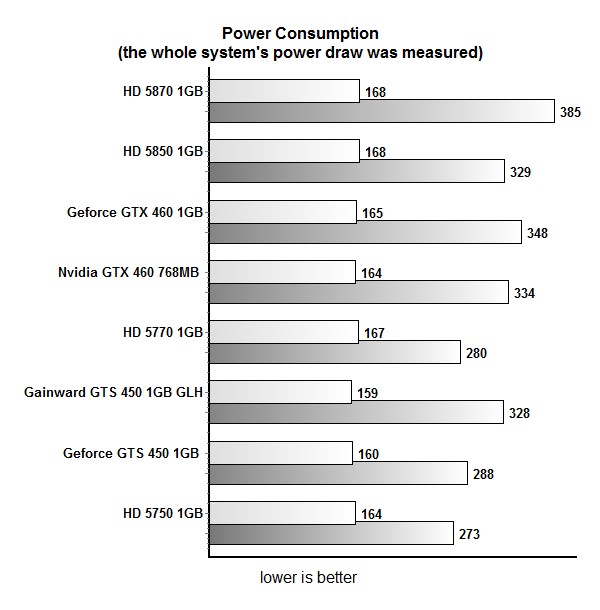
Conclusion
The market currently offers many overclocked GTS 450 cards, a testament to GF106’s nice overclocking potential. Reference clocks stand at 783/1566/902MHz (core/shaders/memory), whereas Gainward’s GTS 450 GLH card runs at 930/1860/4000MHz, making it currently the fastest GTS 450 around.
Gainward offers three GTS 450 cards and all three of these are special for its video outs configuration that Gainward calls “QuattroPorts”. This facet of Gainward’s design is dubbed “GOOD” by the company. The card comes with HDMI, two dual-link DVIs and VGA outs whereas the cooling is Gainward’s dual-slot, nonreference solution.
Gainward squeezed the maximum from GTS 450, with its GLH card offering up to 19% better performance compared to reference cards. Gainward GTS 450 GLH is priced at about €117, here, which unfortunately makes it pricier than most HD 5770 cards – its direct competitors.
All in all, Gainward’s GOOD design has proven to be efficient with GTS 450 cards. The performance boost provided by Gainward’s overclock is pretty nice and definitely gives GTS 450 GLH the edge over its reference counterpart, but everything points to the fact that Nvidia has not yet come up with a HD 5770-killer.
This card will be your faithful companion if your resolutions of choice are up to 1680x1050. If you’re an Nvidian in the market for a new card and have decided to purchase a GTS 450 card, then there’s no reason why Gainward’s GTS 450 GLH shouldn’t be on your list, well ahead of the reference solution of course.

